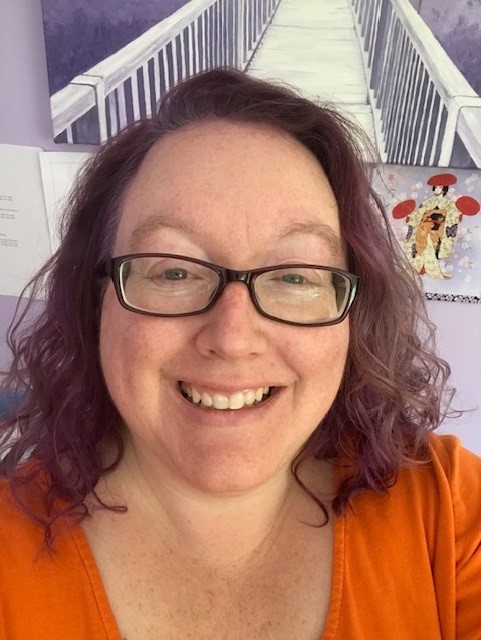Introducing the Evaluation Methodology MS Program at UTK!
By Dr. Jennifer Ann Morrow
 Hi everyone! My name is Dr. Jennifer Ann Morrow, and I’m the program coordinator for the University of Tennessee at Knoxville’s new distance education master’s program in Evaluation Methodology. I’m happy to announce that we are currently taking applications for our first cohort that will start in Fall 2024. In a world driven by data, the EM Master’s program gives you the skills to make evidence-based decisions!
Hi everyone! My name is Dr. Jennifer Ann Morrow, and I’m the program coordinator for the University of Tennessee at Knoxville’s new distance education master’s program in Evaluation Methodology. I’m happy to announce that we are currently taking applications for our first cohort that will start in Fall 2024. In a world driven by data, the EM Master’s program gives you the skills to make evidence-based decisions!
So Why Should You Join Our Program?
Fully Online Program
Our new program is designed for the working professional, all courses are fully online and asynchronous which enables students to complete assignments at times convenient for them. Although our courses are asynchronous our faculty offer optional weekly synchronous student hours/help sessions to offer additional assistance and mentorship. Students also participate in both group and individual advising sessions each semester where students will receive mentorship, practical experience suggestions, and career exploration guidance.
Applied Coursework
Our 30-credit program is designed to be completed in just under 2 years (5 semesters, only 2 courses per semester!). Each class is designed to include hands-on applied experiences on the entire program evaluation process such as evaluation design, data collection, data analysis, and data dissemination. In their first-year, students will take a two-semester program evaluation course sequence, statistics 1, introduction to qualitative research 1, evaluation designs and data collection methods, and an elective. In their second-year students will take survey research, dissemination evaluation results, and a two-semester evaluation practicum course sequence where they will finalize a portfolio of their evaluation experiences to fulfil their comprehensive exam requirements. If students are unable to take 6 credits a semester, they have up to 6 years to complete their degree if they want to go at a slower pace.
Experienced Faculty
Our faculty are experienced educators! All faculty work as evaluators or in a related job such as assessment professional, applied researcher, or psychometrician. They are dedicated faculty that understand what skills and competencies are needed in the evaluation field and ensure that these are focused on within their classes. All are actively involved in their professional organizations (e.g., American Evaluation Association, American Psychological Association, Association for the Assessment of Learning in Higher Education, Association for Institutional Research) and publish their scholarly work in peer-reviewed journals.

How to Apply
It’s easy to apply! Go to the UTK Graduate Admissions Portal (https://apply.gradschool.utk.edu/apply/) and fill out your application. You need 2-3 letters of recommendation (complete the contact information and UTK will reach out to them to complete a recommendation), college transcripts, a goals statement (a letter introducing yourself and why you want to join our program) and submit your application fee. No GRE scores are needed! Applications are due by July 1st of each year (though we will review them early if you submit before then!). Tuition is $700 per graduate credit ($775 for out of state).
Contact Me for More Information
If you have any questions about our program just reach out!
Jennifer Ann Morrow Ph.D.
jamorrow@utk.edu
(865)-974-6117
https://cehhs.utk.edu/elps/people/jennifer-ann-morrow-phd/

Helpful Resources
Evaluation Methodology Program Website: https://cehhs.utk.edu/elps/evaluation-methodology-ms/
Evaluation Methodology Program VOLS Online Website: https://volsonline.utk.edu/programs-degrees/education-evaluation-methodology-ms/
Evaluation Methodology Program Student Handbook: https://cehhs.utk.edu/elps/wp-content/uploads/sites/9/2023/11/EM-MASTERS-HANDBOOK-2023.pdf
UTK Educational Leadership and Policy Studies Website: https://cehhs.utk.edu/elps/
UTK Educational Leadership and Policy Studies Facebook Page: https://www.facebook.com/utkelps/?ref=embed_page
UTK Graduate School Admissions Website: https://gradschool.utk.edu/future-students/office-of-graduate-admissions/applying-to-graduate-school/
UTK Graduate School Admission Requirements: https://gradschool.utk.edu/future-students/office-of-graduate-admissions/applying-to-graduate-school/admission-requirements/
UTK Graduate School Application Portal: https://apply.gradschool.utk.edu/apply/
UTK Distance Education Graduate Fees: https://onestop.utk.edu/wp-content/uploads/sites/9/sites/63/2023/11/Spring-24-GRAD_Online.pdf
UTK Graduate Student Orientations: https://gradschool.utk.edu/future-students/graduate-student-orientations/
American Evaluation Association: https://www.eval.org/
AEA Graduate Student and New Evaluator TIG: https://www.facebook.com/groups/gsnetig/






 Hello! My name is Kiley Compton and I am a fourth-year doctoral student in UT’s
Hello! My name is Kiley Compton and I am a fourth-year doctoral student in UT’s